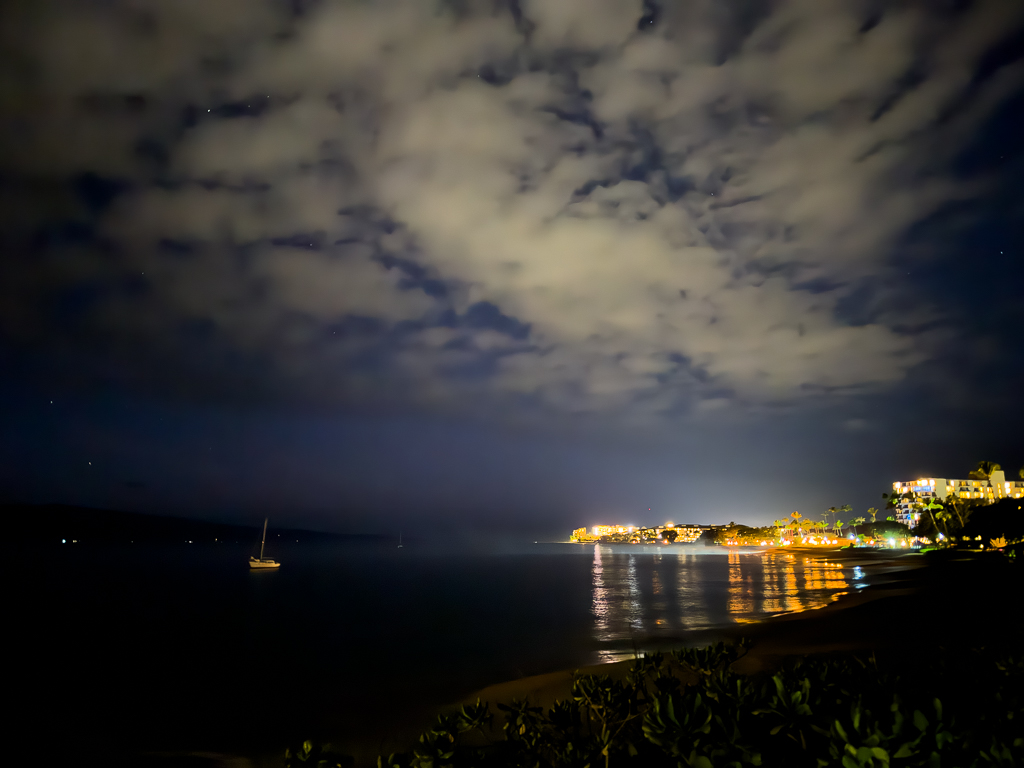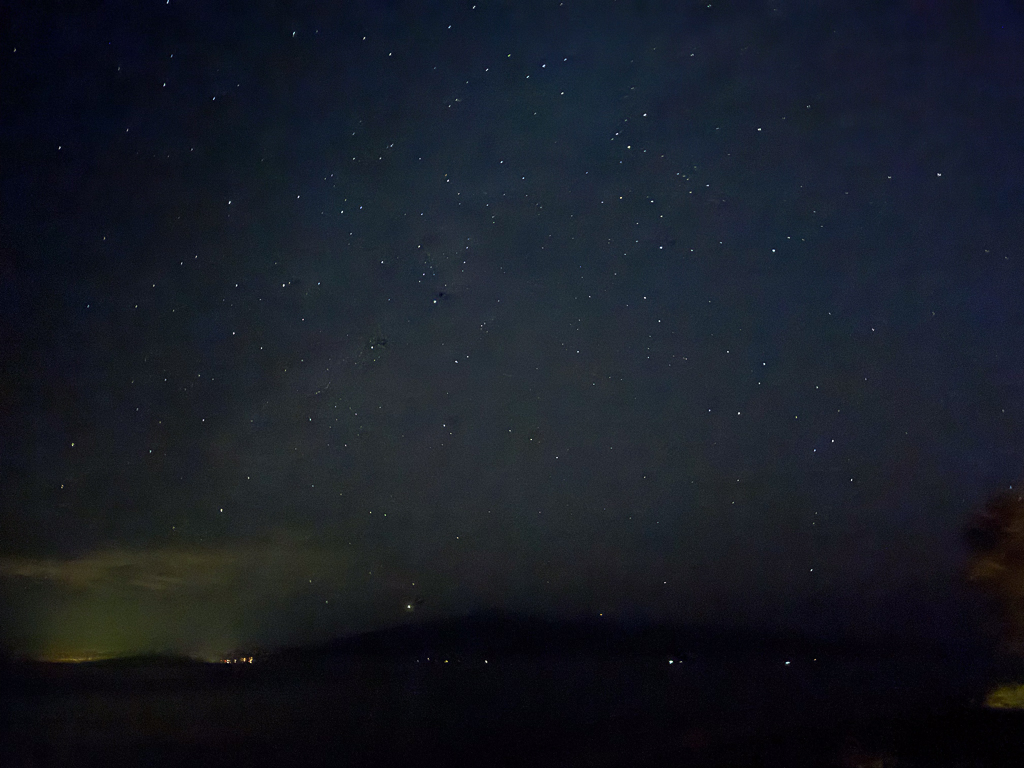We went back to Upcountry this morning, arriving in Makawao just in time for lunch at Freshies. Makawao is billed as Maui’s cowboy town, but you wouldn’t know it from the restaurants, shops, glassblowers, and galleries which line the rather small downtown area.
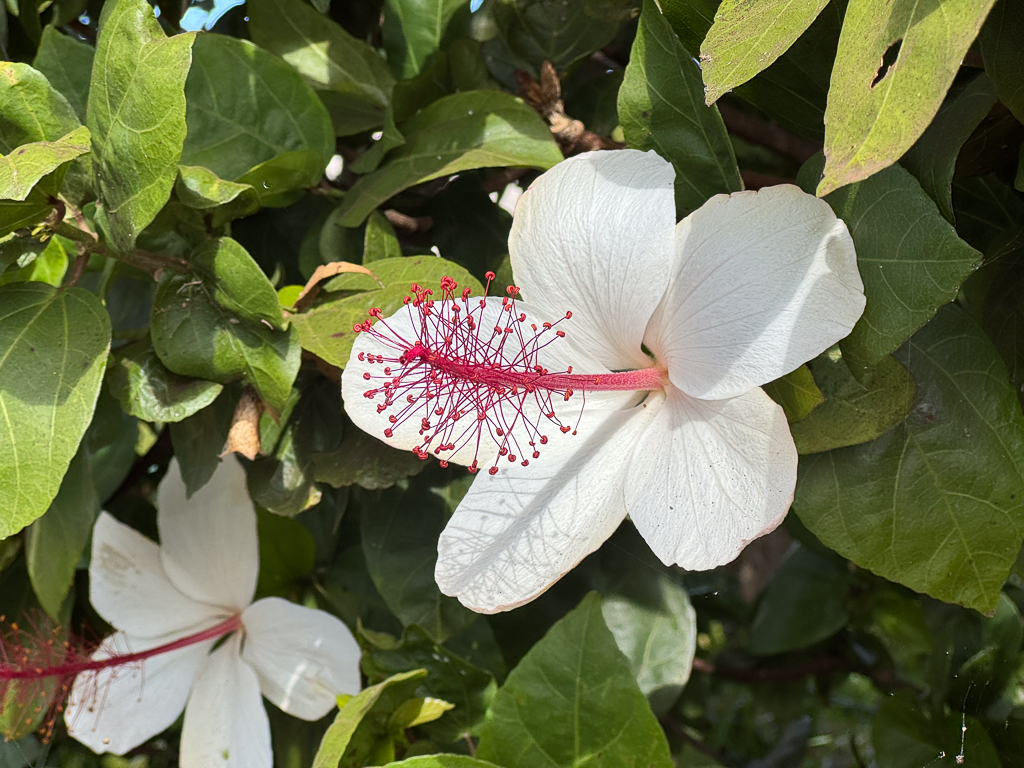
We spent an hour or so after lunch shopping and enjoying the scenery before moving on to our next stop, Surfing Goat Dairy for a “casual tour” and goat cheese tasting. The goat cheese was delicious, and the tour let us pet and feed goats before watching them being milked (they do it a dozen goats at a time – by the time the milker had hooked the last goat up to the machine, the first goat was already finished).
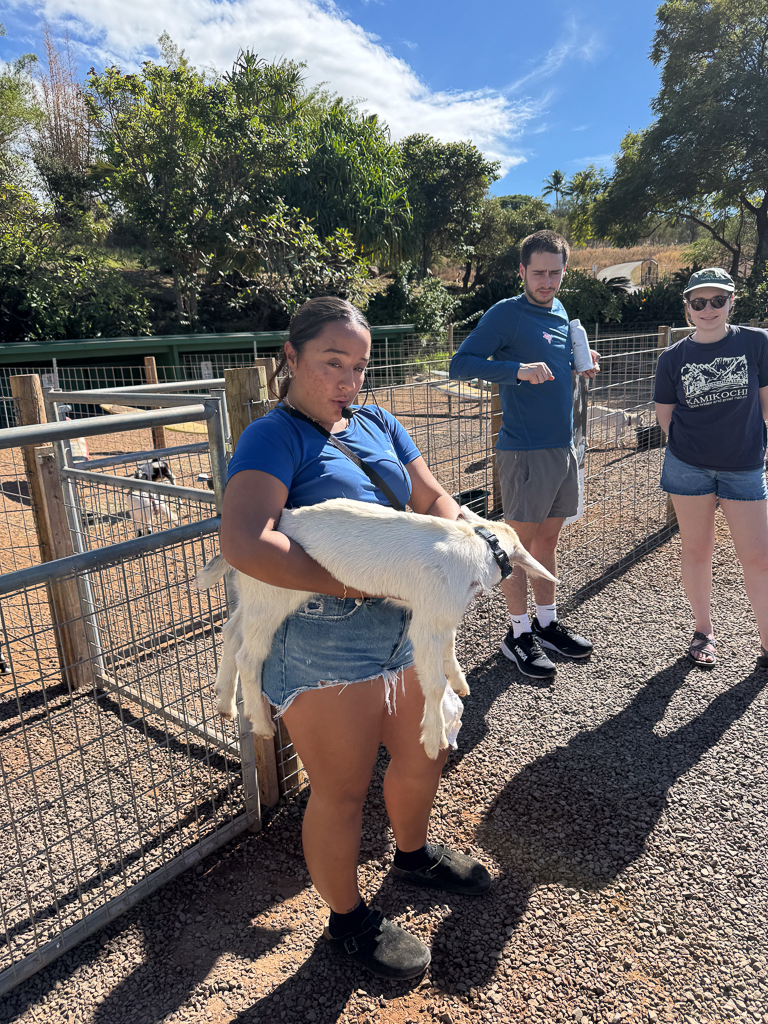
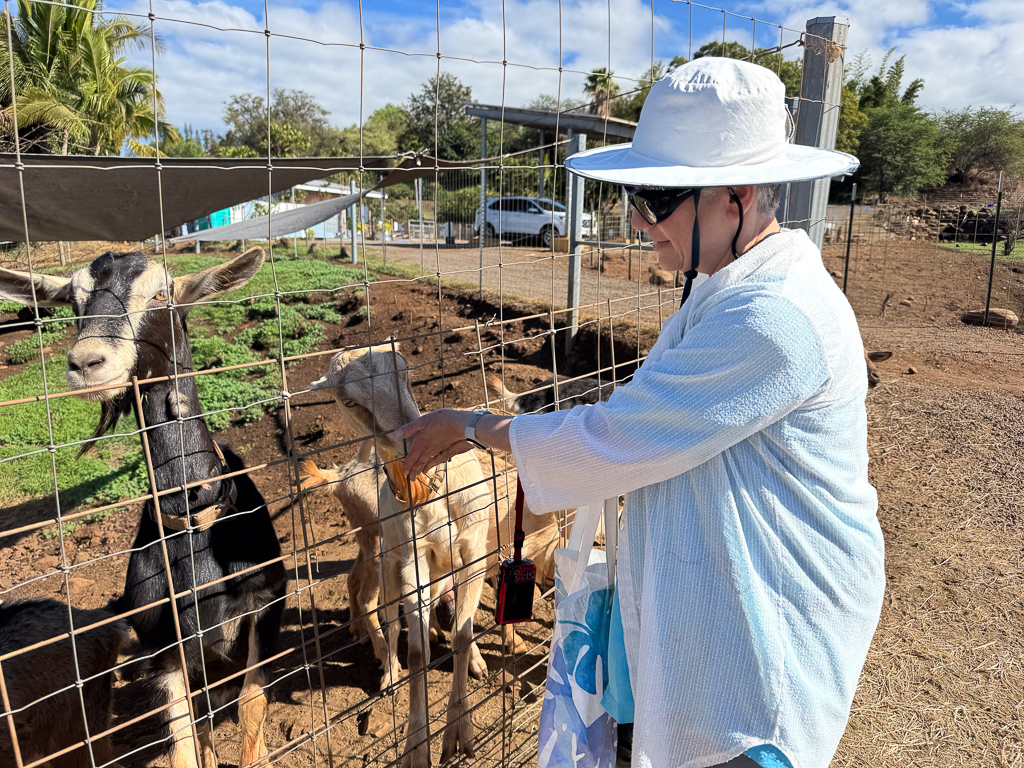
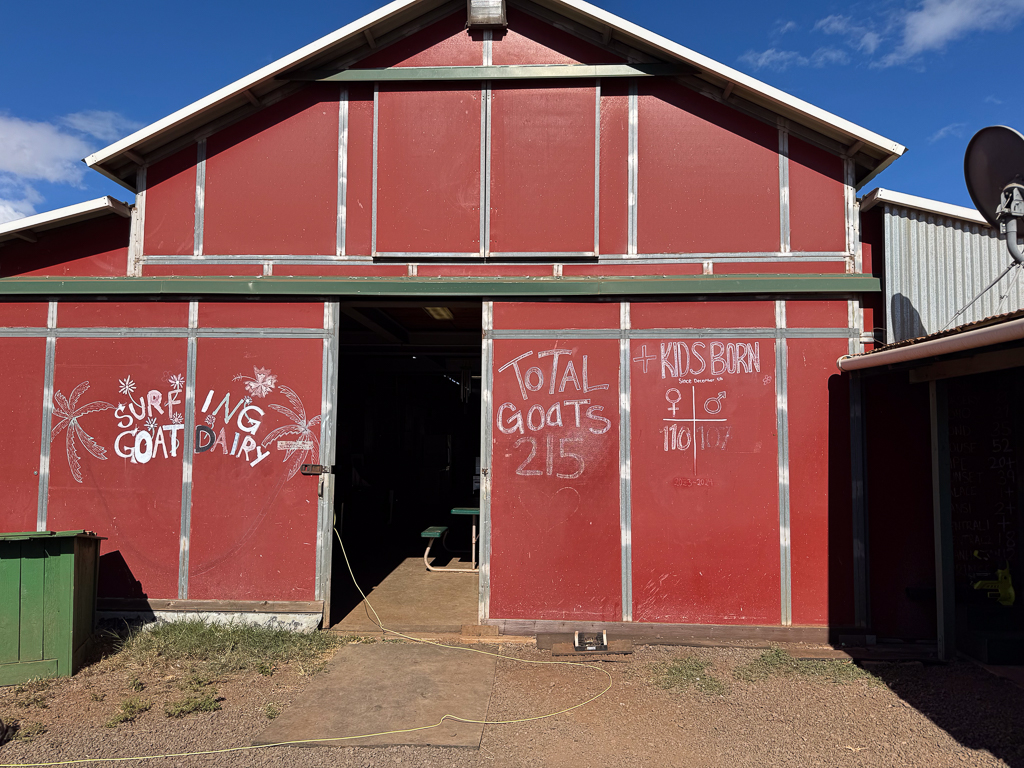
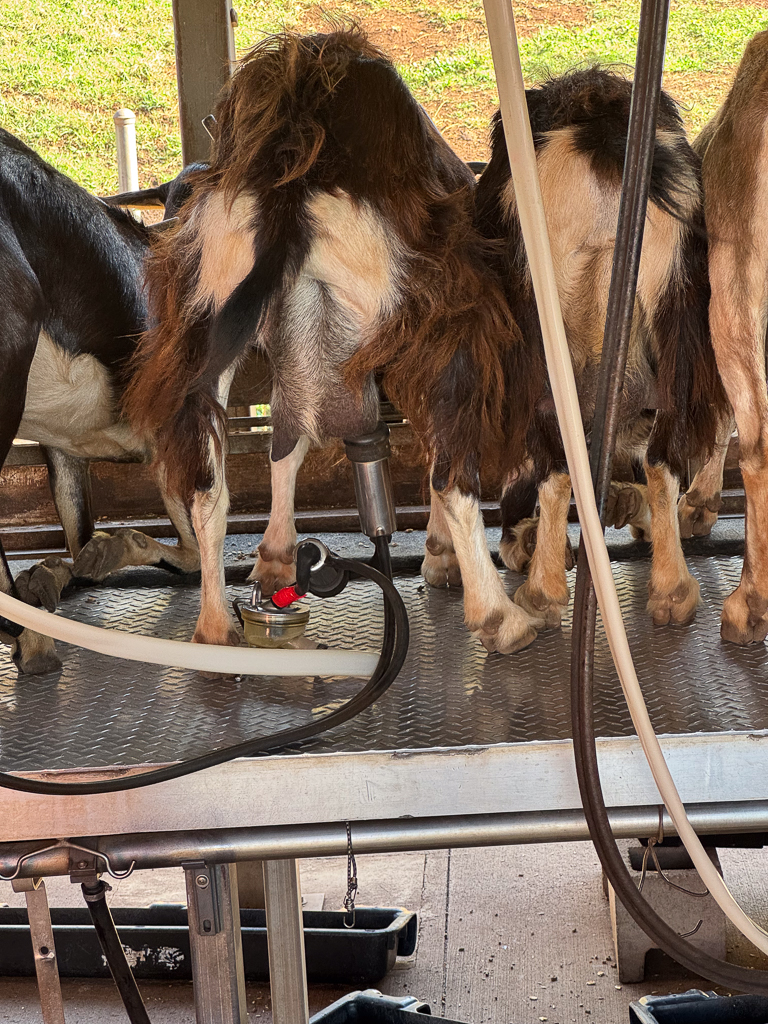
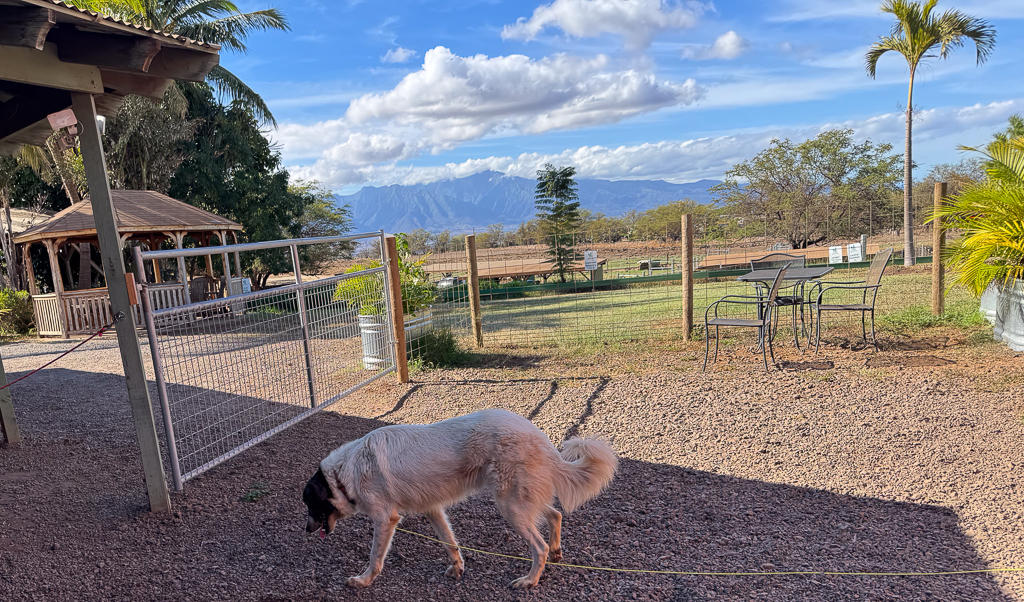

After goats, it was time for booze – we drove four minutes to Ocean Vodka for a tour and tasting. We missed most of the tour but we were there for the full tasting (one vodka, three rums, and a gin, all made with sugarcane grown on the property)!
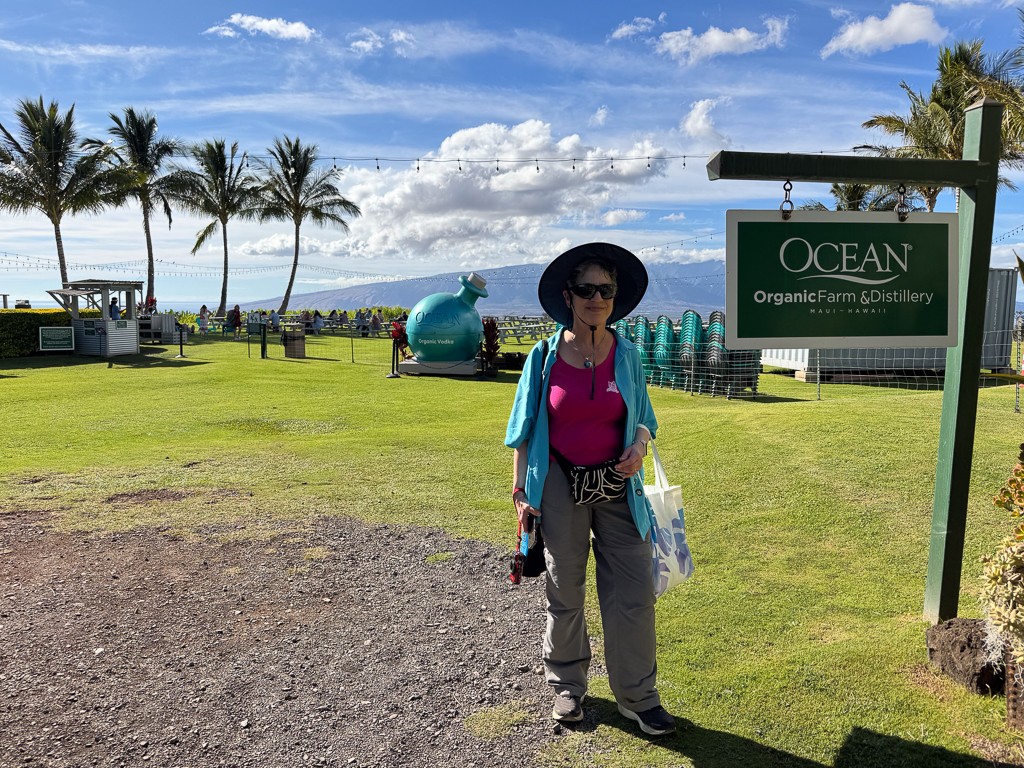
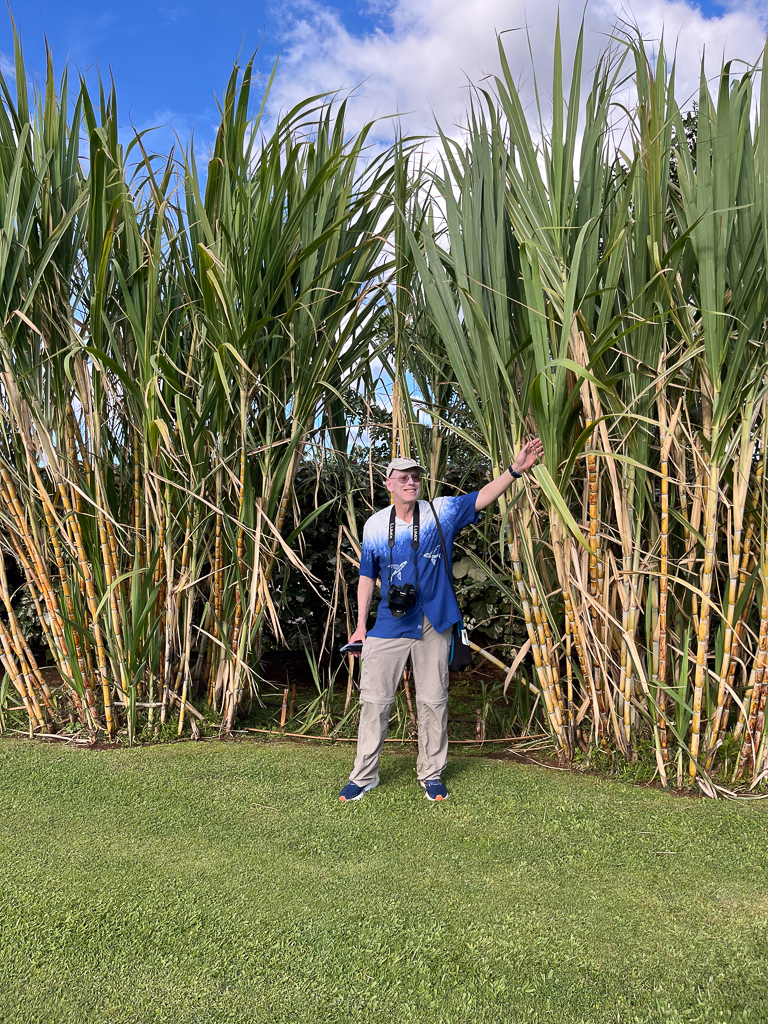
After booze, it was time for dessert at Ululani’s Shave Ice in Kaluhui. Before the Lahaina fire last year, they had a location at the Hyatt Regency at the south end of the Beachwalk, and we’d walk there once or twice during our week on Maui. They closed that location after the fire, so I was glad to find the Kahului location just a couple of blocks off the most direct route back to the Nanea.

We got back to our villa just after sunset. The sky looked interesting, so we went down to the Beachwalk to see it better.

It gets dark quickly here!
